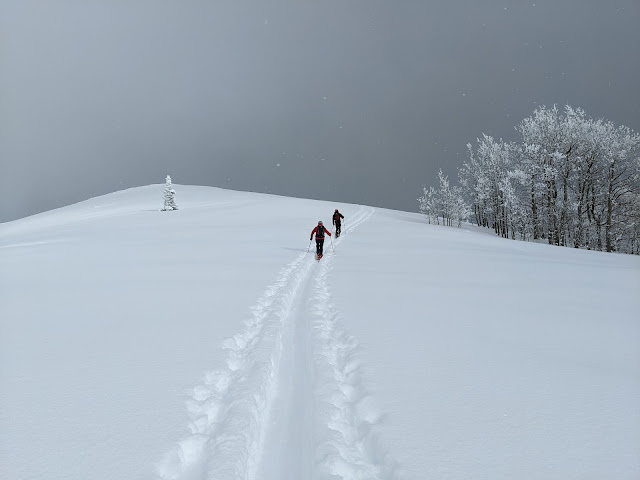"Storm 1" for this cycle is in the books. Per the Utah Avalanche Center report this morning, snowfall totals were 15–35" with 1.58 to 2.95" of snow water equivalent. Backcountry tree skiing yesterday was simply superb on all aspects. It's great to have a right-side-up storm on a deep base with a low-angle sun in late December.
The well-advertised parade of storms is set to continue over the next few days ad the Pacific Basin is ready to get it on. As of 1200 UTC this morning (5 AM Thursday December 29) there were four key storm systems and two major atmospheric rivers upstream over the north Pacific. Storm systems 1 and 2 were along or just off the Pacific Coast this morning. These are expected to weaken as they move inland, brining just some periods of mountain snow showers through Friday.
Storm system 3 is potentially the big one as it is accompanied by a potent atmospheric river that extends upstream into the tropical west Pacific. The term pineapple express is sometimes used for atmospheric rivers originating near Hawaii. This one, however, connects back to the Philippines.
Currently, storm 3 doesn't look like much, and this is where storm 4 comes in. Storm 4 is currently over the Japanese Archipelago and it too is accompanied by an atmospheric river. Storm 4 is expected to amplify as it crosses the Pacific. This in turn will build a ridge immediately upstream of storm 3, which in turn will amplify as it moves into the western United States. This is a process known as downstream development. The availability of moisture from the tropics and sub-tropics with these systems amplifies this process.
So, in the wake of storms 1 and 2, moisture associated with the storm 3 atmospheric river streams across northern California and Nevada to northern Utah on Friday night, as illustrated by the GFS forecast valid 0600 UTC 31 December (11 PM MST Friday).
Then the amplifying storm 3 moves onshore Saturday, with continued precipitation over northern California, Nevada, and Utah. The heartburn aspect of this forecast is the possibility for the precipitation band to shift northward.
We remain in the moist southwesterly flow ahead of the system for an extended period Saturday night and into Sunday.
Finally the system moves downstream and we get into the wrap around/northwesterly flow Sunday night and into Monday.
Got all that? Yeah, it's hard to summarize, and this is just the GFS. There are variations depending on the modeling system or ensemble member. The ECMWF HRES, for example, is less amplified, although that puts northern Utah in a robust warm-front on Saturday afternoon, with heavy precipitation.
So, let me summarize and speculate. Remnants of storms 1 and 2 will move through friday, but won't do much. Maybe a few mountain snow showers. Things begin to pick up late Friday as the atmospheric river preceding storm 3 steams inland and reaches Utah. At that point, many models, like the GFS, really start to crank it up, as evident in the GFS-derived Little Cottonwood forecast below.
The GFS water equivalent through 11 AM Monday is over 3.5 inches. The ECMWF HRES has 2.5" for Salt Lake City and values in excess of 4" in the "HRES Mountains" from Alta south (these models don't properly resolve the terrain so you get oddities like this without downscaling).
 |
| Source: Pivotal Weather |
Our downscaled NAEFS product for Alta-Collins has water totals of 4 to 11 inches through 18Z 2 January, which corresponds to 11 AM Monday.
Bottom line is this looks like another big water cycle for the Wasatch provided the storm doesn't amplify too much, putting us in the warm sector and reducing the cross-barrier flow component. I haven't talked about snow levels, but they are strongly dependent on the amplification as well and will vary a lot during the period, but they will probably rise on Friday and could be in the 6000 to 7500 foot range Friday night through Sunday when they may decrease again. Check forecasts for updates as this could change.
Note that I didn't include the NAEFS snowfall plumes for Alta. I've thrown those out as they just seemed unrealistically high.





























.png)






















